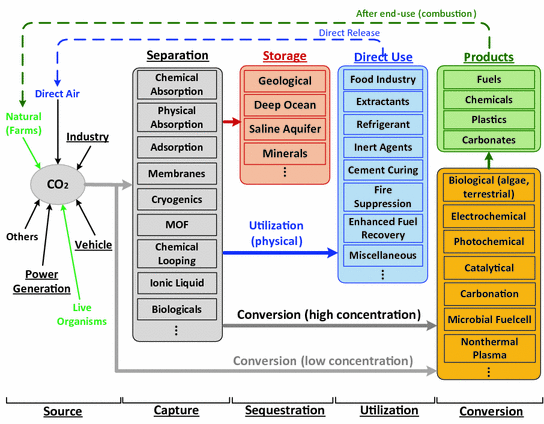India Need to Adopt Carbon Capture, Utilization, and Storage (CCUS) Technologies
by Rudy P. SysAdmin at howtofindthemoneyIndia needs sustainable sources of energy to fuel its growth and cater to the aspirations of its over-1.3 billion population. An enormous strategic thrust on infrastructure development will make the country a leading consumer of steel and cement, both coal-intensive industries, which increase carbon footprints.
Coal still fuels India’s robust economic growth, according to a 2019 report by the International Energy Agency (IEA).
The country’s goal of becoming a $5 trillion economy by 2024 will further boost industrial energy demand, especially for electricity production, according to the report. This will continue to add carbon emissions and thus add to the problem of climate change.
India is already the world’s third-largest CO2 emitter. It is also very vulnerable to climate change, notably from the melting of Himalayan glaciers and changes to the monsoon.

According to its intended Nationally Determined Contributions (NDC), India has ratified to decrease its emissions intensity from its GDP by 33-35 per cent, by 2030 from the 2005 level.
However — faced with the current and projected impacts of climate change — India needs to widen its decarbonisation strategy at a time when the government targets double-digit growth.
The use of fossil fuels (the major reason for CO2 emissions) is closely linked to economic growth. A portfolio of technologies and approaches is needed to address its decarbonisation strategy while supporting economic growth.
New ‘clean coal’ technologies are attempting to address this problem so that the world’s enormous resources of coal can be utilised for future generations without contributing to climate change.
The IPCC 1.5°C report also highlighted some breakthrough technologies like Carbon Capture, Utilization, and Storage (CCUS) in its mitigation pathways.
CCUS encompasses methods and technologies to capture CO2 at its industrial emitting source, followed by its recycling for utilisation, while also determining permanent storage options.
With a proven 90 per cent CO2 capture rate — as per non-profit Centre for Climate & Energy Solutions — CCUS is a mitigation technology India could adopt in the backdrop of coal-dominated energy industries.
CCUS can significantly reduce emissions from coal and gas-based power generation and key industrial processes like steel, cement and chemicals manufacturing.
It also gains more significance in the wake of declining crude oil output of India and is known to be an effective method of Enhanced Oil Recovery (EOR) globally.
The technology plays an increasingly important role in achieving carbon neutrality.
CCUS combined with EOR can be a win-win situation for India since it can help arrest declining output from oil and gas fields.
This will put the country on track to meet the target of cutting its oil import dependence by 2020.
India is now exploring its potential, as a plant at the industrial port of Tamil Nadu’s Tuticorin has begun capturing CO2 from its own coal-powered boiler and using it to make baking soda.
CCUS has also received traction in the Ministry of Power’s 5-year action plan.
However, there is a long way to go.
Building a viable CCUS industry would require a well-devised strategy and government support. It is important to increase public awareness of this technology and its role in CO2 emission mitigation.
The greatest challenge is to bring down the cost of this technology, which can be made possible through deployment of this technology at scale.
India has shown proactive leadership in its efforts to combat climate change. It has already positioned itself as a leader in the renewable energy space by spearheading the creation of the International Solar Alliance.
India remains on track to overachieve its ‘2°C compatible’ Paris Agreement NDC climate action targets. Given this, there is significant potential for the government to increase the ambition of India’s NDCs to ‘1.5˚C compatible’ targets.
There is growing recognition that to be credible, a climate change mitigation strategy should be holistic. To achieve the 1.5°C target, no available technologies should be left out; especially considering CCUS can bolster energy security perspectives.
Under the Paris Agreement, parties are required to update their NDCs every five years, starting 2020. India’s revised NDCs should include policies designed to promote the CCUS technologies.
The government has a leading role to play in deployment of CCUS technologies, either by encouraging research and development or by setting regulatory frameworks.
The collective benefit of increasing the country’s NDC ambition, along with faster and stronger mitigation action, would decrease the long-term costs of adaptation to climate change and climate damages.
The 10 largest coal producers and exporters in Indonesia:
Source: Down To Earth
Sponsor Ads
Created on Feb 28th 2020 15:58. Viewed 782 times.
Comments
No comment, be the first to comment.



